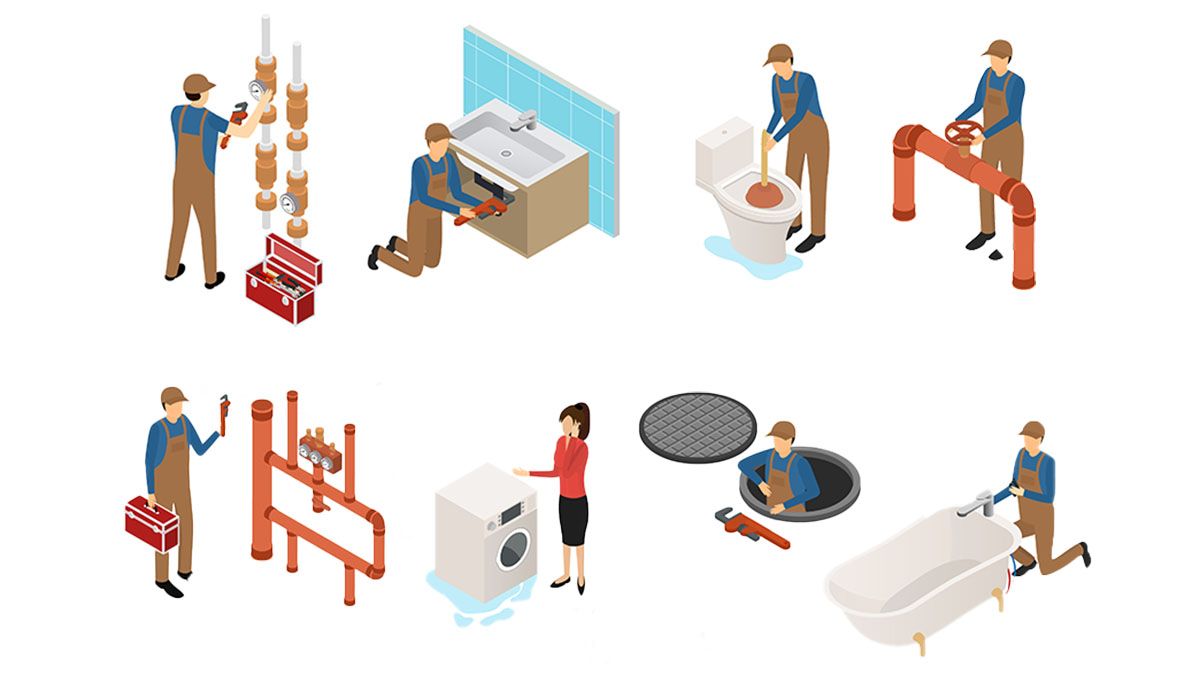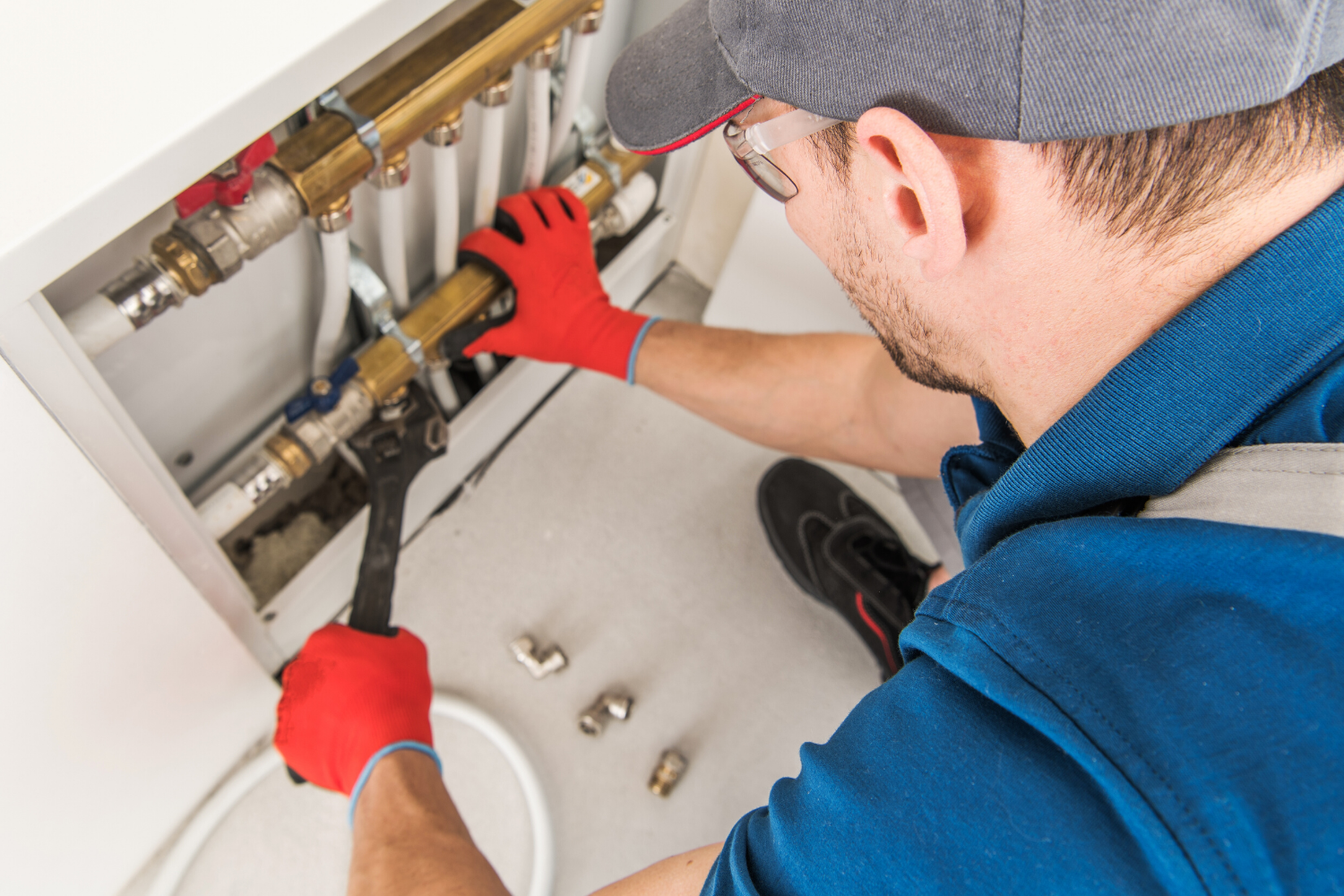H&a Queens Plumbing - Questions
Wiki Article
Not known Details About H&a Queens Plumbing
Table of ContentsThe Best Guide To H&a Queens PlumbingH&a Queens Plumbing - QuestionsUnknown Facts About H&a Queens PlumbingSome Ideas on H&a Queens Plumbing You Should KnowThe H&a Queens Plumbing StatementsFascination About H&a Queens PlumbingThe Single Strategy To Use For H&a Queens PlumbingThe 4-Minute Rule for H&a Queens Plumbing

Air vent piping permits air right into the system so drains pipes flow quickly. If a gallon of water is turned upside down, a "glub, glub, glub" noise will certainly be listened to. If a hole is poked in the various other end, the water will certainly flow efficiently. That is why air is needed to flow behind the water in the drain.
A Biased View of H&a Queens Plumbing
Home owners may see a smell in a restroom that is seldom made use of or in the cellar. Commonly, that odor is a drain gas scent that all plumbing systems generate however are meant to air vent outdoors. The trouble could be that the catch in the bathtub or a basement flooring drainpipe that has actually dried and the sewage system gas is seeping out.It is also feasible that there is a damaged pipe behind a wall or in the attic room. That can be a pricey repair that would call for a plumbing professional to repair (H&A Queens Plumbing plumber queens). Throughout a home examination, the complying with systems ought to be checked: Supply of water and distribution systems, consisting of components of your house such as sinks, toilets, showers and bathtubs Interior drainpipe, waste and vent systems Water heating tools Gas storage and fuel distribution systems Sewer ejectors, sump pumps and associated piping The assessor also will certainly explain the products the visible indoor supply, drain waste and vent piping systems are made from
7 Simple Techniques For H&a Queens Plumbing

There are 2 standard kinds of sump pumps. One kind has a float that can be raised to trigger the pump. The various other type has a pressure button that the property owner can turn on by drawing on a little tube at the plug. In addition, YouTube offers video clips that show just how to examine a sump pump.
H&a Queens Plumbing Fundamentals Explained
Even with proper upkeep, components why not find out more of the system eventually will wear out and require to be changed. It is necessary to make use of an ASHI assessor who is trained to report on the existing condition of a home's plumbing system. Periodic inspection of the entire home is suggested every few years.These professionals succeed in mounting, fixing, and keeping complex water systems. They have comprehensive knowledge of pipeline networks and are experienced at solving intricate plumbing problems successfully.
H&a Queens Plumbing for Dummies
Below are the essential differences between a Master Plumbing and a Journeyman: Highest degree of experience in plumbing. Requires considerable training, experience, and passing a licensing examination. Licensed to run a plumbing company, pull licenses, and oversee other plumbings. Efficient in intricate installments, repairs, and overseeing projects. Mid-level plumbing competence, in between apprentice and master.
Functions under the supervision of master plumbers. Competent in basic pipes tasks, setups, and repair work however doesn't oversee tasks individually. Becoming a master plumbing technician usually involves years of commitment and experience. The journey starts with an apprenticeship that lasts around 4 to five years, throughout which aspiring plumbers discover the fundamentals of the trade with a mix of class study and hands-on work under the assistance of experienced specialists.
H&a Queens Plumbing Fundamentals Explained
The period as a journeyman can vary, but it frequently ranges from 2 to 5 years, depending upon the particular demands established by the state or licensing authority. When the required functional experience is accrued, aspiring master plumbing technicians need to pass a licensing test. H&A Queens Plumbing plumbers in queens ny. Overall, the timeline to become a master plumber can extend around 8 to 10 years or even more, encompassing instruction, journeyman work, and the licensure procedureMaking sure adherence to local structure codes, policies, and safety and security criteria in all pipes job. Managing elaborate pipes installations, repair services, and maintenance for household, industrial, or commercial systems.
The Buzz on H&a Queens Plumbing
In particular instances, master plumbers and engineers may work together on tasks. Engineers may create plumbing systems, and master plumbing technicians would carry out the installment based upon these strategies, highlighting a complementary relationship between the two occupations. The greatest level of plumbing is a Master Plumbing professional. They have extensive experience, and advanced training, and are certified to manage pipes jobs, take care of complicated setups, and make sure conformity with laws Recognizing the value of a Master Plumbing professional clarifies the knowledge important for reliable plumbing systems.A generous Knowing and Employee Advancement program is available, consisting of Education Compensation for staff members seeking added training and professional development.: Advantage and Retirement information might differ from negotiating system to bargaining system. Because of adjustments in State Regulation, present pension arrangements defined in the union contracts are not immediately applied.
Things about H&a Queens Plumbing
Read, prepare or interpret plans and illustrations. Conform with building codes and other guidelines. Plumbers work in a variety of settings, some of which may include hazards.Functioning in restricted spaces. Functioning at elevations (e.g., on platforms/scaffolding or ladders). Threat of eye injury from flying bits. Slides, trips and drops, particularly when operating in wet settings. Burns from hot equipment parts, steam lines, and the launch of warm water or heavy steam. Functioning with different tools (both hand devices and powered devices).
Report this wiki page